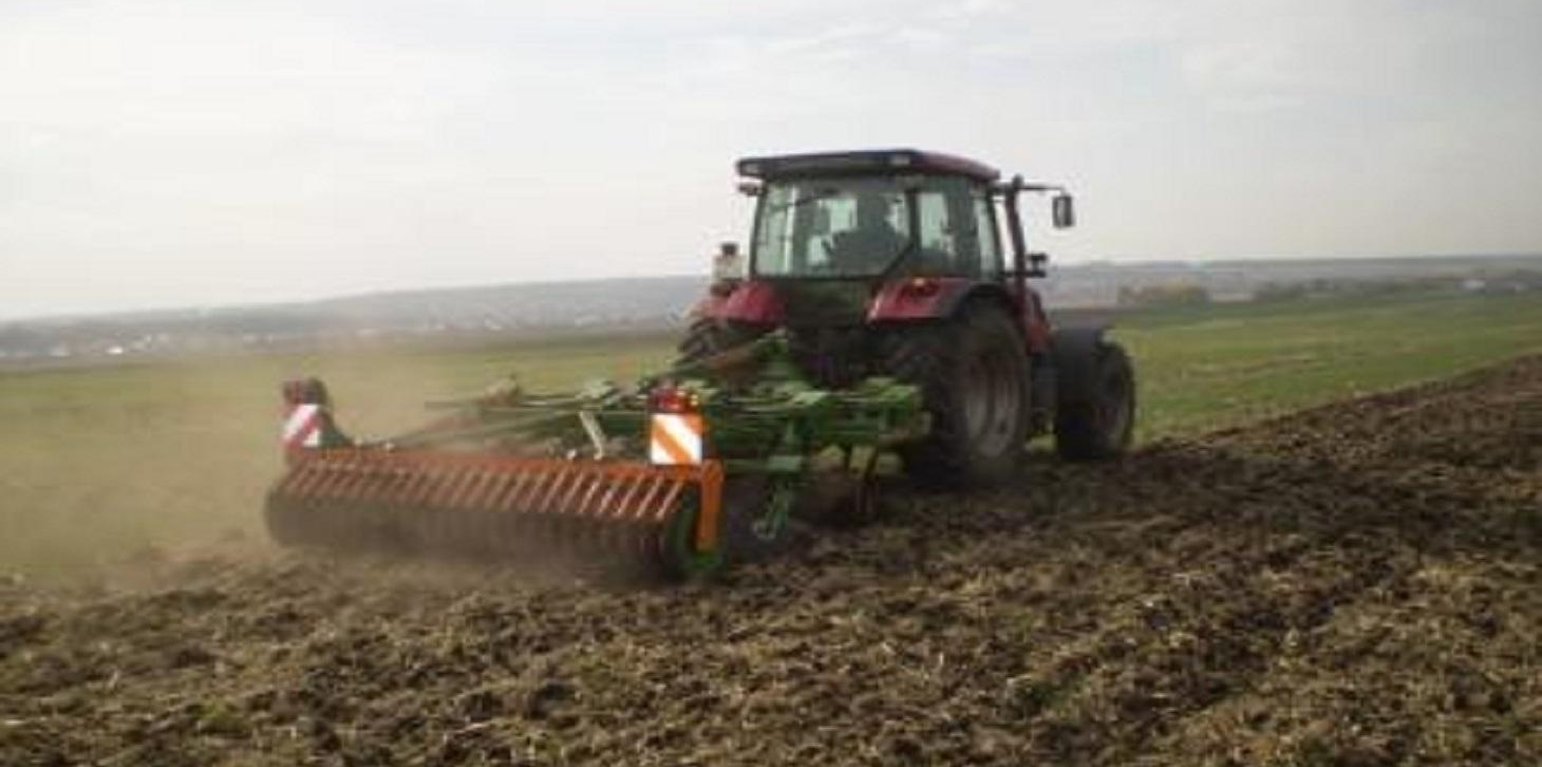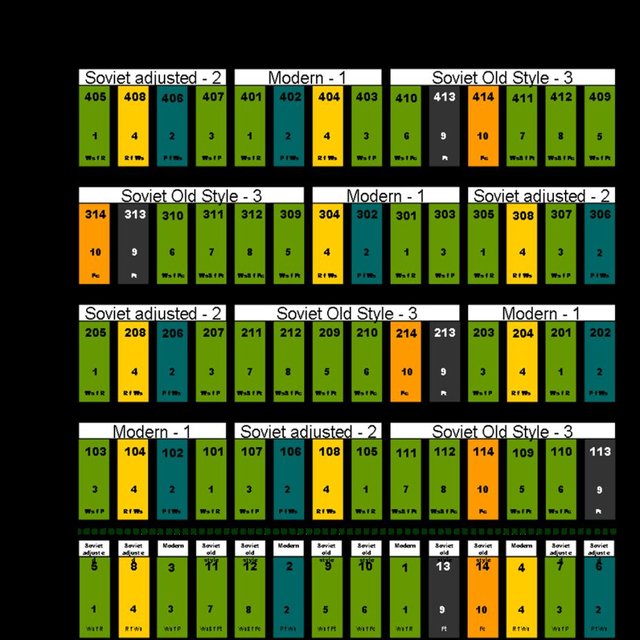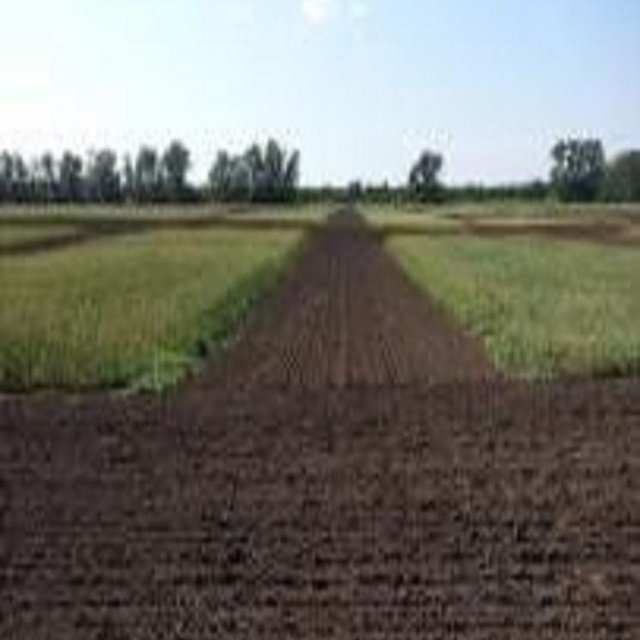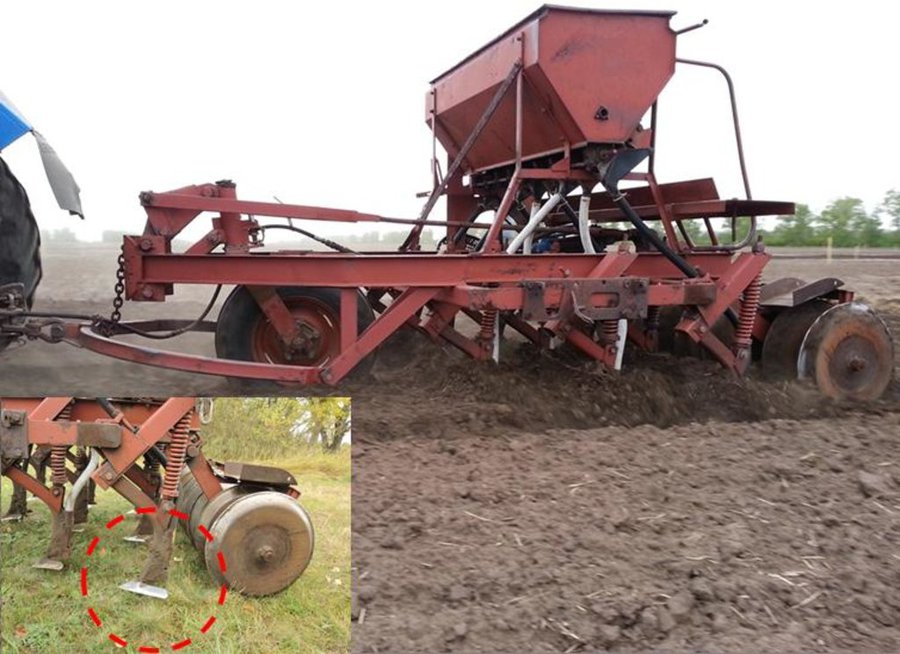



Minimum tillage is a key element of the "adapted Soviet cropping system", which aims at more sustainable land use but based on predominantly local technologies. For successful implementation of minimum tillage, adaption of the whole cropping system is required, including crop rotation. Rotation includes a succession of cereal crops (e.g. spring wheat), legumes (peas), and oil seed crops. Stubble cultivation in autumn is best performed with the "Catros" compact disc harrow for a quick, shallow operation. Seedbed preparation is carried out using a classic Russian seeder modified with wing shares for shallow seedbed preparation including soil mixing. In general, the performance of this drill is very close to that of a cultivator.
Minimizing tillage, saves time and fuel, and also helps to reduce evaporation, as well as protecting the soil against erosion. Shallow tillage with disc harrows after harvest ensures better stubble mixing and stimulates the germination of weed seeds. The adapted seeder, SZS 2.1, works with wing shares that open the soil and place the seed. Thus traditional deep tillage operations for the preparation of the seedbed can are omitted: that helps to reduce costs. With respect to crop protection, the first and most important element is to implement a full crop rotation. To control late germinating weeds and seeds of the previous crop, a disc harrow is used for shallow cultivation – this can be supplemented by the application of a non-selective herbicide if there is germination - to avoid the risk of flowering before the hard frost sets in. Fertilization becomes more important, because of the decreased mineralization rate under minimized soil tillage, especially at the beginning of the conversion of the cropping system.
The Technology including crop rotation was tested in the field in 4 test plots with 4 repetitions at the test site in Poluyamki. Results showed that the intensity of soil tillage and seeding methods used had a great influence on crop establishment and expected yields. It was demonstrated that minimizing tillage leads to higher water use efficiency and highest yields. Positive effects were also observed regarding soil structure and soil fertility already after 3 years. Minimized soil disturbance led to higher aggregate stability, which leads to a lower risk of wind erosion, increased soil organic carbon storage and soil fertility as well as available soil water content. The adapted Soviet system is more profitable, due to higher gross margins.
The test site in Poluyamki is located in the dry steppe of the border region next to Kazakhstan, where, due to the climatic conditions, no natural afforestation occurs, and the planted windbreaks don’t grow vigorously due to the prevailing aridity. The annual precipitation is under 300 mm a year. Probably the greatest climatic influence factor is the precipitation - in terms of quantity and space/ time distribution and, due to high summer temperatures, the high rates of evapotranspiration. The total yearly precipitation rate is the primary yield-limiting factor in all steppe regions. The ratio between precipitation and evaporation is negative. In the late weeks of spring, prolonged droughts must be expected in 5-year cycles, limiting germination and crop establishment. The soils are classed among those of cool-tempered grasslands. Due to their physical and chemical characteristics, these soils (Chernozems and Kastanozems) have high agronomic potential.

Localização: Mikhaylovski district (Pavlovski district, Mamontovski district), Russian Federation/Altai Krai, Federação Russa
Nº de sites de tecnologia analisados:
Difusão da tecnologia: Uniformemente difundida numa área (0.13 km²)
Em uma área permanentemente protegida?:
Data da implementação: menos de 10 anos atrás (recentemente)
Tipo de introdução









| Especifique a entrada | Unidade | Quantidade | Custos por unidade (n.a.) | Custos totais por entrada (n.a.) | % dos custos arcados pelos usuários da terra |
| Mão-de-obra | |||||
| labour | ha | 1,0 | 4,34 | 4,34 | 100,0 |
| Equipamento | |||||
| machine use | ha | 1,0 | 37,4 | 37,4 | 100,0 |
| fuel | ha | 1,0 | 47,34 | 47,34 | 100,0 |
| Material vegetal | |||||
| seeds | ha | 1,0 | 25,3 | 25,3 | 100,0 |
| Fertilizantes e biocidas | |||||
| fertilizer | ha | 1,0 | 30,83 | 30,83 | 100,0 |
| pesticides | ha | 1,0 | 9,42 | 9,42 | 100,0 |
| Custos totais para a manutenção da tecnologia | 154.63 | ||||
| Custos totais de manutenção da Tecnologia em USD | 154.63 | ||||
In the first years after the change of the cropping system, there is an increased risk of crop losses due not correct/suitable management of the new cropping system
mainly for initial investments and herbicides in the first years
but increase of costs for herbicides and fertilizer; decrease for fuel and labor
particular necessary in the first years after the imlementation of the minimum tillage system
In general yes, but food security is not a problem in this region.
Especially in the first years after the implementation of the minimum tillage system.
there is a higher content of soil moisture under minimum tillage than under traditional ploughing especially in dry weather periods / drought periods.